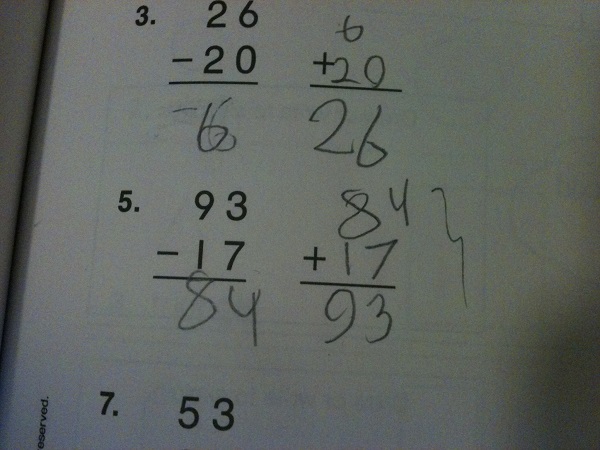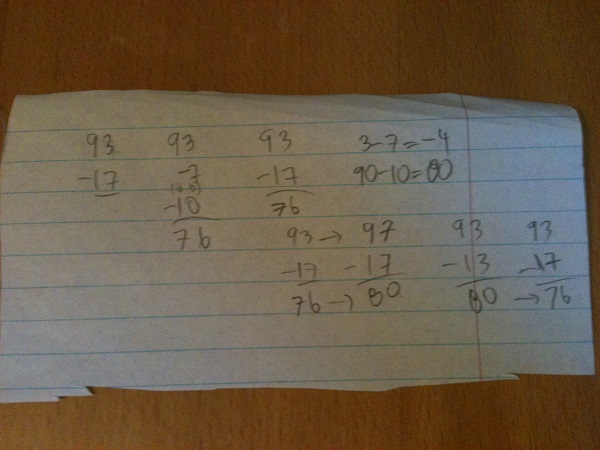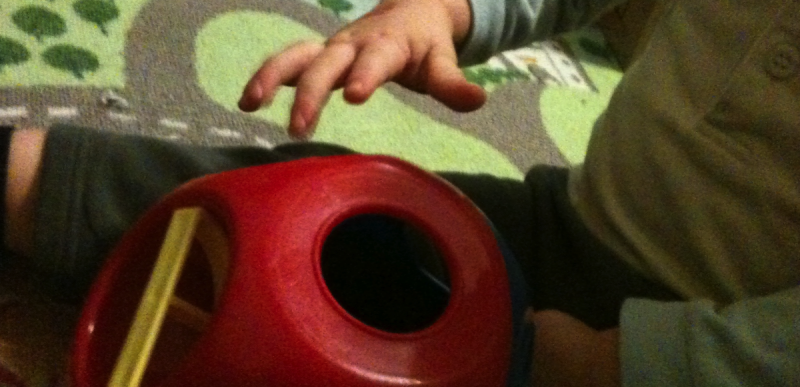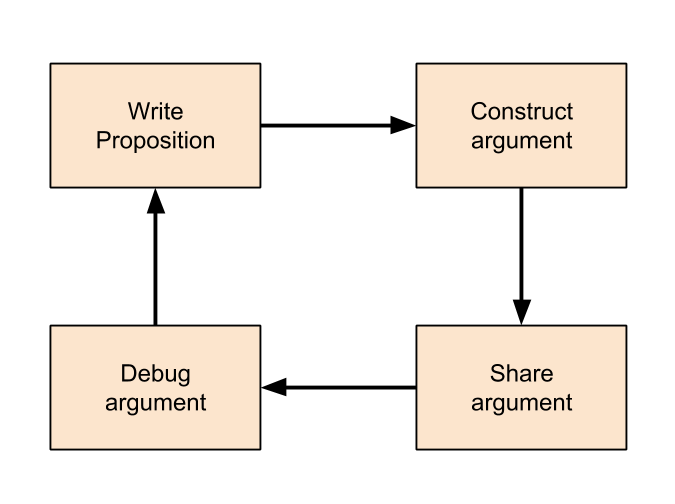The following are studies which were all featured in the media in 2013. I am posting them here in the hope that they will be read more widely than they are, and that educators will examine the research themselves, and think about how this may affect their current practice.
I’ve included a link to the study as well as either an abstract or the summary of the research as presented by the author of the article linked. These are all studies which either support current hypothesises about the importance of recognizing social and cultural issues in teaching and learning mathematics, relate to the importance of early mathematics education (and the role parents can play), or observe that the style of instruction that is used has an impact on student learning.
Finally, I’ve included a couple of studies I read which were not specifically done in the area of mathematics education itself, but which I think are obviously related.
Socio-emotional and cultural issues
Why Students Choose STEM Majors: Motivation, High School Learning, and Postsecondary Context of Support
“This study draws upon social cognitive career theory and higher education literature to test a conceptual framework for understanding the entrance into science, technology, engineering, and mathematics (STEM) majors by recent high school graduates attending 4-year institutions. Results suggest that choosing a STEM major is directly influenced by intent to major in STEM, high school math achievement, and initial postsecondary experiences, such as academic interaction and financial aid receipt. Exerting the largest impact on STEM entrance, intent to major in STEM is directly affected by 12th-grade math achievement, exposure to math and science courses, and math self-efficacy beliefs—all three subject to the influence of early achieve- ment in and attitudes toward math. Multiple-group structural equation modeling analyses indicated heterogeneous effects of math achievement and exposure to math and science across racial groups, with their positive impact on STEM intent accruing most to White students and least to under- represented minority students.”
Women do better on math tests when they fake their names
“Unsurprisingly, and as the title of this post already suggests, women do indeed perform better on math tests when they assume a name other than their own — and this happens regardless of whether they take a male or female name.
As a recent study by Shen Zhang has shown, using another person’s name is a kind of hack to overrule the self-reputational threat — the fear some women have of doing poorly when they’re concerned that it’ll be taken as proof of a stereotype. But removing this pressure seems to alleviate the fear and the distraction.
For the study, Zhang recruited 110 women and 72 men — all of them undergrads — and had them answer 30 multiple-choice math questions. Prior to the test, and in an effort to instill the stereotype threat, all participants were told that men typically outperform women at math. Some of the volunteers were told to write the test under their real name, but some were told to complete the test under one of four different aliases, either Jacob Tyler, Scott Lyons, Jessica Peterson, or Kaitlyn Woods…”
Early Nervousness Over Number Impacts Future Performance
“According to a recent study by Rose Vukovic, NYU Steinhardt professor of teaching and learning, math gives some New York City students stomachaches, headaches, and a quickened heartbeat. In short, math makes these children anxious.
“Math anxiety hasn’t really been looked at in children in early elementary grades,” said Vukovic, a school psychologist and researcher of learning disabilities in mathematics. “The general consensus is that math anxiety doesn’t affect children much before fourth grade. My research indicates that math anxiety does in fact affect children as early as first grade.”
Vukovic’s first study, “Mathematics Anxiety in Young Children,” will be published in the Journal of Experimental Education. It explored mathematics anxiety in a sample of ethnically and linguistically diverse first graders in New York City Title I schools. Vukovic and her colleagues found that many first grade students do experience negative feelings and worry related to math. This math anxiety negatively affects their math performance when it comes to solving math problems in standard arithmetic notation…”
Female teachers’ math anxiety affects girls’ math achievement
“People’s fear and anxiety about doing math—over and above actual math ability—can be an impediment to their math achievement. We show that when the math-anxious individuals are female elementary school teachers, their math anxiety carries negative consequences for the math achievement of their female students. Early elementary school teachers in the United States are almost exclusively female (>90%), and we provide evidence that these female teachers’ anxieties relate to girls’ math achievement via girls’ beliefs about who is good at math. First- and second-grade female teachers completed measures of math anxiety. The math achievement of the students in these teachers’ classrooms was also assessed. There was no relation between a teacher’s math anxiety and her students’ math achievement at the beginning of the school year. By the school year’s end, however, the more anxious teachers were about math, the more likely girls (but not boys) were to endorse the commonly held stereotype that “boys are good at math, and girls are good at reading” and the lower these girls’ math achievement. Indeed, by the end of the school year, girls who endorsed this stereotype had significantly worse math achievement than girls who did not and than boys overall. In early elementary school, where the teachers are almost all female, teachers’ math anxiety carries consequences for girls’ math achievement by influencing girls’ beliefs about who is good at math.”
Early learning and parental involvement
Deconstructing Building Blocks: Preschoolers’ Spatial Assembly Performance Relates to Early Mathematical Skills
“This study focuses on three main goals: First, 3-year-olds’ spatial assembly skills are probed using interlocking block constructions (N = 102). A detailed scoring scheme provides insight into early spatial processing and offers information beyond a basic accuracy score. Second, the relation of spatial assembly to early mathemati- cal skills was evaluated. Spatial skill independently predicted a significant amount of the variability in concur- rent mathematical performance. Finally, the relationship between spatial assembly skill and socioeconomic status (SES), gender, and parent-reported spatial language was examined. While children’s performance did not differ by gender, lower-SES children were already lagging behind higher-SES children in block assembly. Furthermore, lower-SES parents reported using significantly fewer spatial words with their children.”
What’s the earliest age that children think abstractly?
“Caren Walker and Alison Gopnik (2013) examined toddlers ability to understand a higher order relation, namely, causality triggered by the concept “same.”
The experimental paradigm worked like this. The toddler was shown a white box and told “some things make my toy play music and some things do not make my toy play music.” The child then observed three pairs of blocks that made the box play music, as shown below. On the fourth trial, the experimenter put one block on the box and asked the child to select another that would make the toy play music. There were three choices: a block that looked the same as the one already on the toy, a block that had previously been part of a pair that made the toy play music, and a completely novel block…”
Quality of early parent input predicts child vocabulary 3 years later
“Children vary greatly in the number of words they know when they enter school, a major factor influencing subsequent school and workplace success. This variability is partially explained by the differential quantity of parental speech to preschoolers. However, the contexts in which young learners hear new words are also likely to vary in referential transparency; that is, in how clearly word meaning can be inferred from the immediate extralinguistic context, an aspect of input quality. To examine this aspect, we asked 218 adult participants to guess 50 parents’ words from (muted) videos of their interactions with their 14- to 18-mo-old children. We found systematic differences in how easily individual parents’ words could be identified purely from this socio-visual context. Differences in this kind of input quality correlated with the size of the children’s vocabulary 3 y later, even after controlling for differences in input quantity. Although input quantity differed as a function of socioeconomic status, input quality (as here mea- sured) did not, suggesting that the quality of nonverbal cues to word meaning that parents offer to their children is an individual matter, widely distributed across the population of parents.”
What counts in the development of young children’s number knowledge?
“Prior studies indicate that children vary widely in their mathematical knowledge by the time they enter preschool and that this variation predicts levels of achievement in elementary school. In a longitudinal study of a diverse sample of 44 preschool children, we examined the extent to which their understanding of the cardinal meanings of the number words (e.g., knowing that the word “four” refers to sets with 4 items) is predicted by the “number talk” they hear from their primary caregiver in the early home environment. Results from 5 visits showed substantial variation in parents’ number talk to children between the ages of 14 and 30 months. Moreover, this variation predicted children’s knowledge of the cardinal meanings of number words at 46 months, even when socioeconomic status and other measures of parent and child talk were controlled. These findings suggest that encouraging parents to talk about number with their toddlers, and providing them with effective ways to do so, may positively impact children’s school achievement…”
Why Mental Arithmetic Counts: Brain Activation during Single Digit Arithmetic Predicts High School Math Scores
“Do individual differences in the brain mechanisms for arithmetic underlie variability in high school mathematical competence? Using functional magnetic resonance imaging, we correlated brain responses to single digit calculation with standard scores on the Preliminary Scholastic Aptitude Test (PSAT) math subtest in high school seniors. PSAT math scores, while controlling for PSAT Critical Reading scores, correlated positively with calculation activation in the left supramarginal gyrus and bilateral anterior cingulate cortex, brain regions known to be engaged during arithmetic fact retrieval. At the same time, greater activation in the right intraparietal sulcus during calculation, a region established to be involved in numerical quantity processing, was related to lower PSAT math scores. These data reveal that the relative engagement of brain mechanisms associated with procedural versus memory-based calculation of single-digit arithmetic problems is related to high school level mathematical competence, highlighting the fundamental role that mental arithmetic fluency plays in the acquisition of higher-level mathematical competence.”
Young Children’s Interpretation of Multi-Digit Number Names: From Emerging Competence to Mastery
“This study assessed whether 207 3- to 7-year-olds could interpret multi-digit numerals using simple identification and comparison tasks. Contrary to the view that young children do not understand place value, even 3-year-olds demonstrated some competence on these tasks. Ceiling was reached by first grade. When training was provided (based on either base-10 blocks or written symbols), there were significant gains, suggesting that children can improve their partial understandings with input. Our findings add to what is known about the processes of symbolic development and the incidental learning that occurs prior to schooling, as well as specifying more precisely what place value misconceptions remain as children enter the educational system.”
Instructional strategies
Study shows new teaching method improves math skills, closes gender gap in young students
“When early elementary math teachers ask students to explain their problem-solving strategies and then tailor instruction to address specific gaps in their understanding, students learn significantly more than those taught using a more traditional approach. This was the conclusion of a yearlong study of nearly 5,000 kindergarten and first-grade students conducted by researchers at Florida State University.
The researchers found that “formative assessment,” or the use of ongoing evaluation of student understanding to inform targeted instruction, increased students’ mastery of foundational math concepts that are known to be essential to later achievement in mathematics and science…”
Academic music: music instruction to engage third-grade students in learning basic fraction concepts
“This study examined the effects of an academic music intervention on conceptual understanding of music notation, fraction symbols, fraction size, and equivalency of third graders from a multicultural, mixed socio-economic public school setting. Students (N = 67) were assigned by class to their general education mathematics program or to receive academic music instruction two times/week, 45 min/session, for 6 weeks. Academic music students used their conceptual understanding of music and fraction concepts to inform their solutions to fraction computation problems. Linear regression and t tests revealed statistically significant differences between experimental and comparison students’ music and fraction concepts, and fraction computation at posttest with large effect sizes. Students who came to instruction with less fraction knowledge responded well to instruction and produced posttest scores similar to their higher achieving peers.”
Non-traditional mathematics curriculum results in higher standardized test scores, study finds
“James Tarr, a professor in the MU College of Education, and Doug Grouws, a professor emeritus from MU, studied more than 3,000 high school students around the country to determine whether there is a difference in achievement when students study from an integrated mathematics program or a more traditional curriculum. Integrated mathematics is a curriculum that combines several mathematic topics, such as algebra, geometry and statistics, into single courses. Many countries that currently perform higher than the U.S. in mathematics achievement use a more integrated curriculum. Traditional U.S. mathematics curricula typically organize the content into year-long courses, so that a 9th grade student may take Algebra I, followed by Geometry, followed by Algebra II before a pre-Calculus course.
Tarr and Grouws found that students who studied from an integrated mathematics program scored significantly higher on standardized tests administered to all participating students, after controlling for many teacher and student attributes. Tarr says these findings may challenge some long-standing views on mathematics education in the U.S…”
Duke Study Finds Improving ‘Guesstimating’ Can Sharpen Math Skills
“You may not have heard of it, but it’s a skill you probably use everyday, like when choosing the shortest line at the grocery store or the toll booth with the fewest number of cars. Approximate number math, or ‘guesstimating,’ is the ability to instinctively estimate quantities without counting. Researchers at Duke University set out to discover whether practicing this ability would improve symbolic math skills, like addition and subtraction.
They discovered that study participants who were given approximate number training sessions did dramatically better on symbolic math tests than those who were not. Those who received training also received significantly higher scores on the math tests after the training than before…”
Related research
What Science Teachers Need to Know
“The researchers (Sadler et al., 2013) tested 181 7th and 8th grade science teachers for their knowledge of physical science in fall, mid-year, and years end. They also tested their students (about 9,500) with the exact same instrument.
Each was a twenty-item multiple choice test. For 12 of the items, the wrong answers tapped a common misconception that previous research showed middle-schoolers often hold. For example, one common misconception is that burning produces no invisible gases. This question tapped that idea:
But the researchers didn’t just ask the teachers to pick the right answer. They also asked teachers to pick the answer that they thought their students would pick…”
Research: Improving Test Scores Doesn’t Equate to Improving Abstract Reasoning
“A team of neuroscientists at MIT and other institutions has found that even when schools take instructional steps that help raise student scores on high-stakes tests, that influence doesn’t translate to improvements in learners’ abilities to perform abstract reasoning. The research, which took place a couple of years ago, studied 1,367 then-eighth-graders who attended traditional, charter, and exam schools in Boston. (All were public schools.)
The researchers found that while some schools raised their students’ scores on the Massachusetts Comprehensive Assessment System (MCAS) — a sign of “crystallized intelligence” — the same efforts don’t result in comparable gains in “fluid intelligence.” The former refers to the knowledge and skills students acquire in school; the latter describes the ability to analyze abstract problems and think logically…”
Classes should do hands-on exercises before reading and video, Stanford researchers say
“A new study from the Stanford Graduate School of Education flips upside down the notion that students learn best by first independently reading texts or watching online videos before coming to class to engage in hands-on projects. Studying a particular lesson, the Stanford researchers showed that when the order was reversed, students’ performances improved substantially.
While the study has broad implications about how best to employ interactive learning technologies, it also focuses specifically on the teaching of neuroscience and underscores the effectiveness of a new interactive tabletop learning environment, called BrainExplorer, which was developed by Stanford GSE researchers to enhance neuroscience instruction…”




